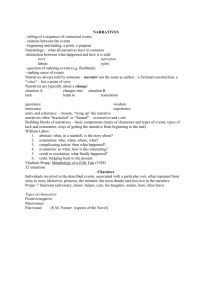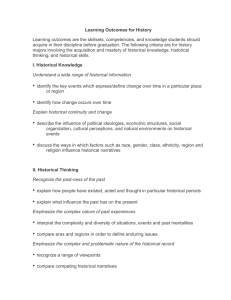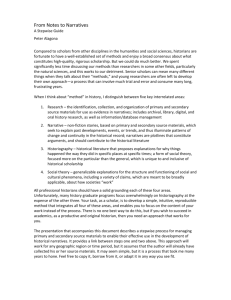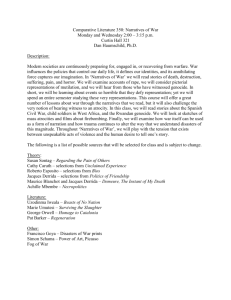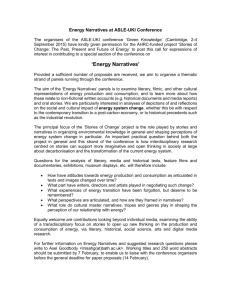Why make this movie?
advertisement
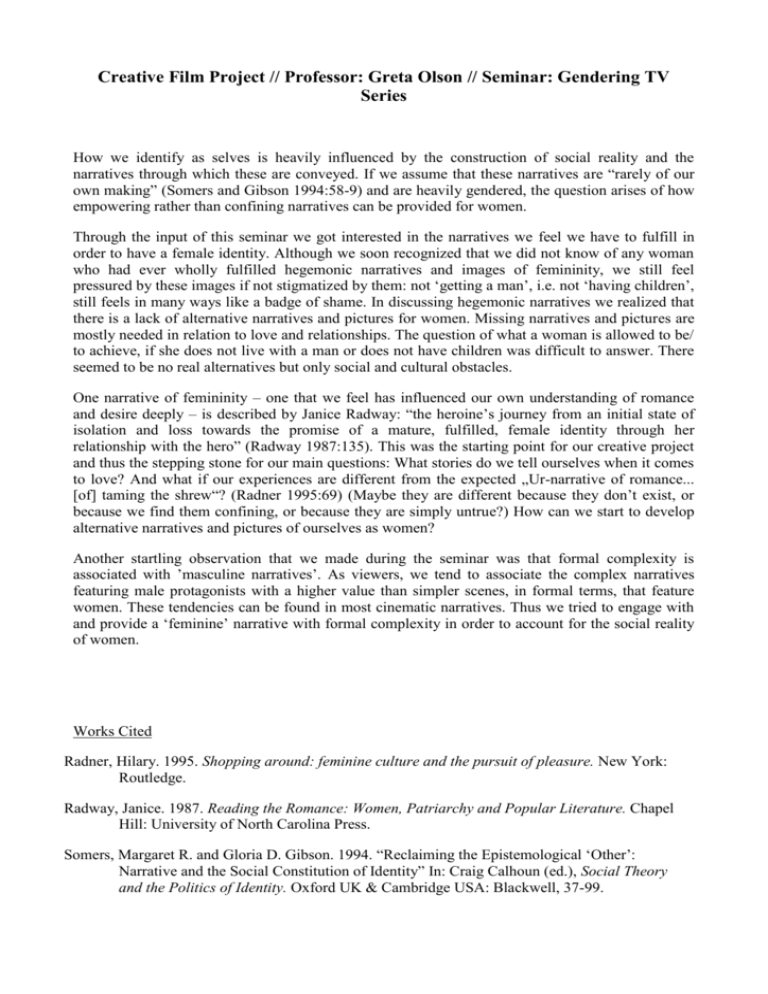
Creative Film Project // Professor: Greta Olson // Seminar: Gendering TV Series How we identify as selves is heavily influenced by the construction of social reality and the narratives through which these are conveyed. If we assume that these narratives are “rarely of our own making” (Somers and Gibson 1994:58-9) and are heavily gendered, the question arises of how empowering rather than confining narratives can be provided for women. Through the input of this seminar we got interested in the narratives we feel we have to fulfill in order to have a female identity. Although we soon recognized that we did not know of any woman who had ever wholly fulfilled hegemonic narratives and images of femininity, we still feel pressured by these images if not stigmatized by them: not ‘getting a man’, i.e. not ‘having children’, still feels in many ways like a badge of shame. In discussing hegemonic narratives we realized that there is a lack of alternative narratives and pictures for women. Missing narratives and pictures are mostly needed in relation to love and relationships. The question of what a woman is allowed to be/ to achieve, if she does not live with a man or does not have children was difficult to answer. There seemed to be no real alternatives but only social and cultural obstacles. One narrative of femininity – one that we feel has influenced our own understanding of romance and desire deeply – is described by Janice Radway: “the heroine’s journey from an initial state of isolation and loss towards the promise of a mature, fulfilled, female identity through her relationship with the hero” (Radway 1987:135). This was the starting point for our creative project and thus the stepping stone for our main questions: What stories do we tell ourselves when it comes to love? And what if our experiences are different from the expected „Ur-narrative of romance... [of] taming the shrew“? (Radner 1995:69) (Maybe they are different because they don’t exist, or because we find them confining, or because they are simply untrue?) How can we start to develop alternative narratives and pictures of ourselves as women? Another startling observation that we made during the seminar was that formal complexity is associated with ’masculine narratives’. As viewers, we tend to associate the complex narratives featuring male protagonists with a higher value than simpler scenes, in formal terms, that feature women. These tendencies can be found in most cinematic narratives. Thus we tried to engage with and provide a ‘feminine’ narrative with formal complexity in order to account for the social reality of women. Works Cited Radner, Hilary. 1995. Shopping around: feminine culture and the pursuit of pleasure. New York: Routledge. Radway, Janice. 1987. Reading the Romance: Women, Patriarchy and Popular Literature. Chapel Hill: University of North Carolina Press. Somers, Margaret R. and Gloria D. Gibson. 1994. “Reclaiming the Epistemological ‘Other’: Narrative and the Social Constitution of Identity” In: Craig Calhoun (ed.), Social Theory and the Politics of Identity. Oxford UK & Cambridge USA: Blackwell, 37-99.

